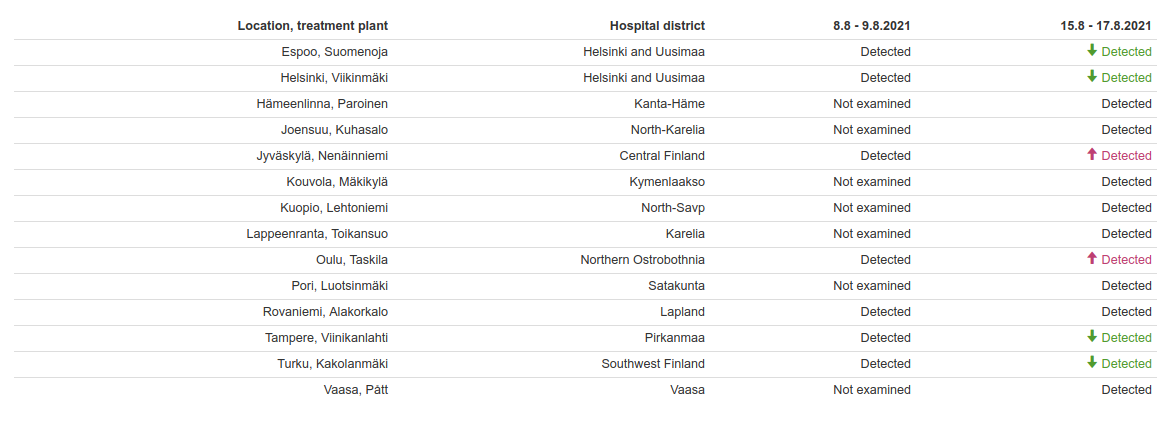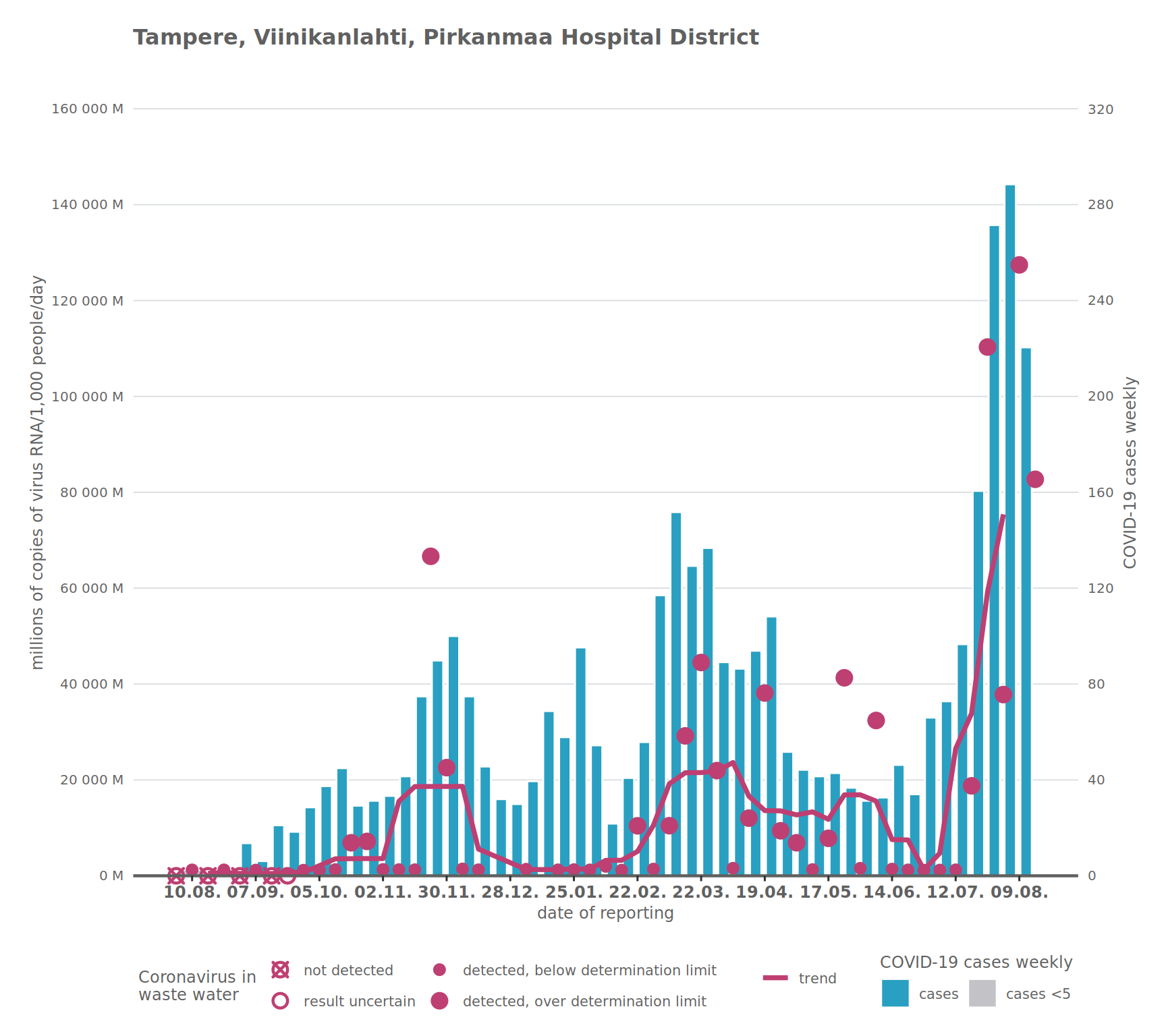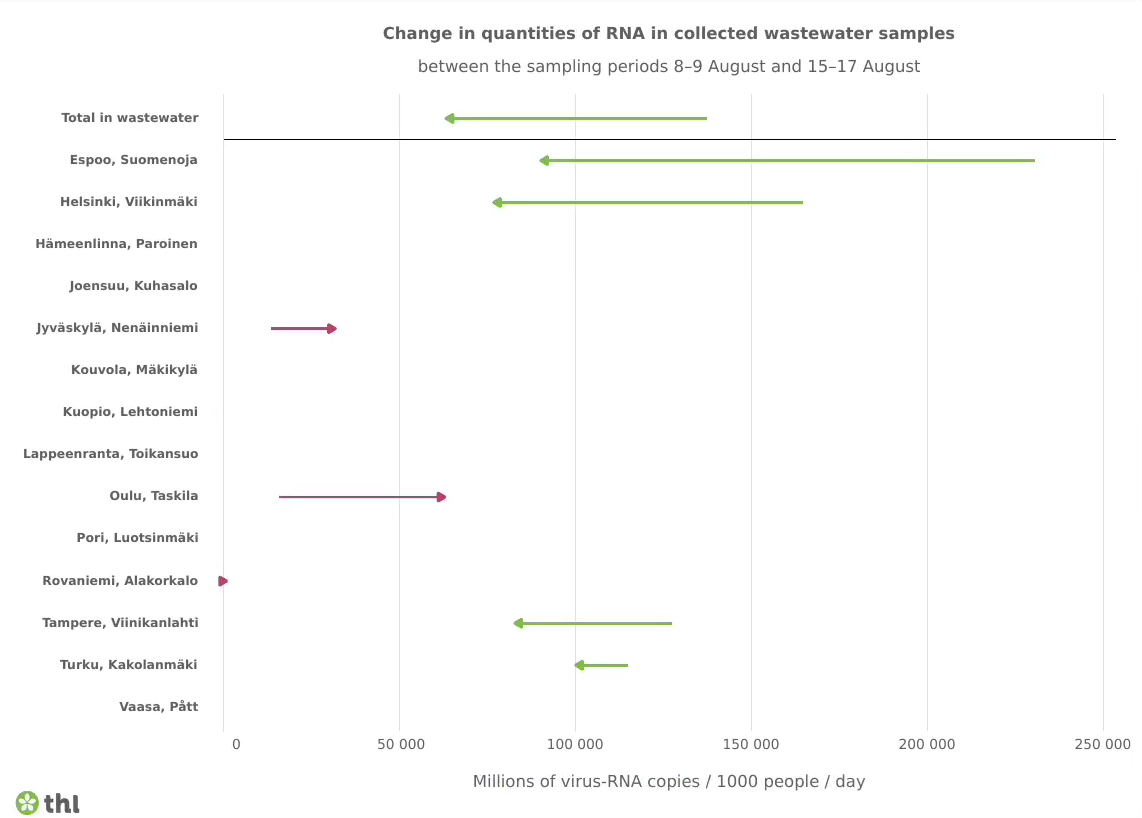Six new cities included in coronavirus wastewater monitoring
The National Institute for Health and Welfare (THL) is expanding coronavirus wastewater monitoring. The new wastewater treatment plants included in the most recent sampling round were Kuopio, Vaasa, Pori, Joensuu, Kouvola and Hämeenlinna.
In the latest sampling, carried our from 15 to 17 August, the coronavirus genome was detected in samples from all the treatment plants. The genome quantities observed were lower, however, in many localities. Two areas which saw an increase were Jyväskylä and Oulu.

Results of the coronavirus wastewater studies for the sampling rounds 8–9 August and 15–17 August.
From the beginning of June, wastewater monitoring has followed the recommendations of the European Commission by focusing on the largest cities where the population covered by wastewater treatment plant's sewage network exceeds 150,000 people. Weekly monitoring has been carried out at the wastewater treatment plants in Helsinki, Espoo, Turku, Tampere, Oulu and Jyväskylä. In addition, a fortnightly samples have been taken at Lappeenranta and Rovaniemi.
‘The scope of wastewater monitoring needs to be increased again to provide demographic information on regional changes in the coronavirus situation,’ explains Chief Specialist Carita Savolainen-Kopra from THL.
The revised wastewater monitoring report has new technical features which help with comparing the results to the number of coronavirus cases observed in individual testing in the different regions.
The increase in infection rates can be seen in the results of the wastewater monitoring. For example, the wastewater samples collected from Viinikanlahti in Tampere in June and July produced several results that remained below the determination limit, meaning that only small amounts of the RNA genome of coronavirus were detected. Towards the end of July and through early August, however, the genome quantities have risen to record levels.
‘The same trend can also be seen at other wastewater treatment plants that are part of the monitoring,’ says Researcher Anna-Maria Hokajärvi from THL.

Results of Tampere wastewater monitoring and numbers of infections per week from August 2020 onwards.
Tracking changes in the quantities of coronavirus genome in wastewater supports ongoing monitoring of the changing epidemic situation
From now on, the reporting on wastewater monitoring will monitor more closely the change in the numbers of coronavirus genome copies in each wastewater treatment plant over each two-week monitoring period. Information is also available for each wastewater treatment plant both for the two-week monitoring periods and for longer monitoring periods stretching back to August 2020.
A two-week comparison is not yet available, however, for the six wastewater treatment plants added this week to the monitoring programme.

Graph of the numbers of coronavirus genome copies found in wastewater monitoring. A green arrow means that the most recent sampling found a smaller number of copies than the previous one. The red arrow, on the other hand, means that the number of copies has increased.
Further information:
Further information on coronavirus wastewater monitoring
European Commission Recommendation on Coronavirus Wastewater Monitoring
Anna-Maria Hokajärvi
Researcher
Finnish Institute for Health and Welfare
Tel. +358 29 524 7715
[email protected]
Carita Savolainen-Copra
Chief Specialist, Head of Unit
Finnish Institute for Health and Welfare



